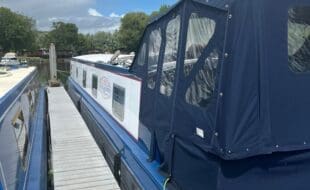MONDAY sees the start of the Green Blue’s Boating Wildlife Aware Week (June 10-14), an awareness campaign from the RYA’s environmental programme.
The annual campaign celebrates the amazing animals and birds that we share our blue spaces with and promotes best practice methods for minimising wildlife disturbance.
Here are The Green Blue’s top tips on how we can all be more wildlife aware on the water…
Get prepared
If you are exploring a new area of water, remember to research the wildlife that you may see before setting off. Learning about an animal’s behavioural habits, including feeding and resting locations and the times of the day that they undertake these activities will not only help you to react better if you encounter them, but it will also make your trip more interesting.
If you are intending to anchor, before your trip, find out if there are any protected seabed habitats nearby. You can search for protected seabed habitats by visiting the ‘Anchoring with Care’ page on The Green Blue website. If possible, try to use an existing mooring.
Wildlife in the water
Spotting nearby wildlife as soon as possible, is an easy way to give yourself, and the boat, enough time to react. Keeping a pair of binoculars handy will help you to spot any wildlife at a distance. Maintaining 300 ft. away from wildlife should give both yourself and them enough time to react appropriately.
Once an animal has been spotted, particularly one in the water, slow the speed of your boat. It is important to retain a consistent course as any change in direction will mark you as unpredictable and animals will be unable to choose a suitable direction to avoid the boat.
Some animals, such as dolphins, may choose to follow your boat for a short time and swim amongst your boat’s wash. If this does happen, simply slow your engine down and wait for them to choose to leave – animals shouldn’t ever be chased or followed in the water.
Caring for habitats
A constant flow of traffic can cause banks to slowly become eroded, if you’re able to reduce the wash from your boat, this will reduce erosion and will also be far less disruptive to birds and animals feeding or wading near the shoreline. A sensible use of the throttle, plus good boat handling skills can significantly reduce your wash and improve fuel efficiency. Not exceeding 4 knots is general best practice when near the shore, but it may be necessary to slow further if you are close to the bank.
At the end of your trip, remember to try to go ashore using recognised landing places to reduce risk to nesting birds on the shore. This will also avoid the hull, your feet, and trailer wheels coming into direct contact with sensitive habitats in shallow waters.
Get social
You can find more information about boating safely around wildlife on the Wildlife & Habitat Protection pages on The Green Blue website.
You can also follow The Green Blue on Facebook, X: @TheGreenBlue and Instagram: @the_green_blue and use the hashtag: #BoatingWildlifeAware.
PHOTO: RYA/OLIVIA WELLS





